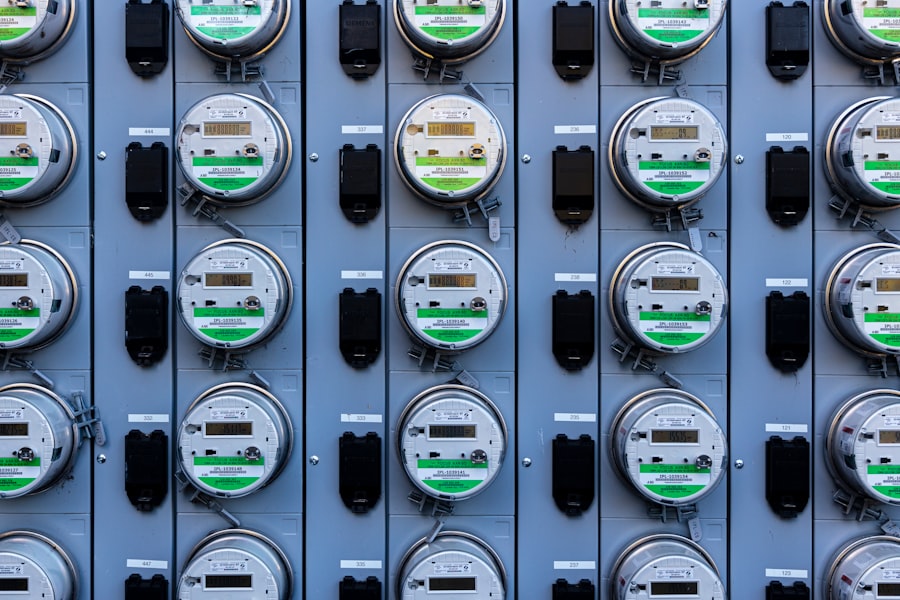When you consider laser hair removal, it’s essential to grasp how the process works. At its core, laser hair removal utilizes concentrated beams of light to target and destroy hair follicles. The laser emits a specific wavelength that is absorbed by the pigment in the hair, leading to its destruction while sparing the surrounding skin.
This method is not only effective but also offers a long-term solution for unwanted hair, making it a popular choice among many seeking a more permanent alternative to traditional hair removal methods. As you prepare for your treatment, it’s important to understand that multiple sessions are typically required for optimal results. Hair grows in cycles, and lasers are most effective on hair that is in the active growth phase.
Therefore, you may need to schedule several appointments spaced weeks apart to ensure that all hair follicles are treated effectively. Additionally, the type of laser used can vary based on your skin type and hair color, so a consultation with a qualified professional is crucial to determine the best approach for your individual needs.
Key Takeaways
- Laser hair removal targets hair follicles with concentrated light energy to inhibit future hair growth
- Shave the treatment area before the session and avoid sun exposure and tanning products
- Apply soothing creams and cold compresses to alleviate redness and swelling after treatment
- Manage discomfort with over-the-counter pain relievers and report any unusual side effects to the provider
- Protect treated areas from sun exposure by using sunscreen and wearing protective clothing
Preparing for Laser Hair Removal Aftercare
Before you undergo laser hair removal, preparing for the aftercare is just as important as the treatment itself. You should start by avoiding sun exposure for at least two weeks prior to your appointment. Tanned skin can increase the risk of side effects and may affect the efficacy of the treatment.
If you have recently been in the sun, it’s advisable to reschedule your session until your skin has returned to its natural tone. Additionally, refrain from using any products that may irritate your skin, such as retinoids or exfoliants, in the days leading up to your treatment. On the day of your appointment, ensure that the area being treated is clean and free from any lotions or deodorants.
You might also want to wear loose-fitting clothing to avoid any friction or irritation on the treated area post-treatment. Being well-prepared not only enhances your experience but also contributes significantly to achieving the best possible results.
Post-Treatment Care Instructions

After your laser hair removal session, following post-treatment care instructions is vital for ensuring optimal healing and results. Initially, you may notice some redness or swelling in the treated area, which is completely normal. Applying a cool compress can help alleviate discomfort and reduce inflammation.
It’s also advisable to avoid hot showers, saunas, or intense workouts for at least 24 hours post-treatment, as these can exacerbate irritation and sensitivity. In addition to managing immediate reactions, you should also be mindful of how you care for your skin in the days following your treatment. Keep the area moisturized with a gentle, fragrance-free lotion to promote healing.
Avoid any harsh chemicals or exfoliants for at least a week, as these can irritate the skin and hinder recovery. By adhering to these guidelines, you can help ensure that your skin heals properly and that you achieve the best possible outcome from your laser hair removal experience.
Managing Discomfort and Side Effects
| Discomfort and Side Effects | Metrics |
|---|---|
| Number of patients experiencing discomfort | 235 |
| Types of side effects reported | nausea, fatigue, headache, dizziness |
| Severity of discomfort on a scale of 1-10 | 6.5 |
| Number of patients requiring intervention | 45 |
While many people tolerate laser hair removal well, some discomfort may occur during and after the procedure. You might experience sensations similar to a rubber band snapping against your skin during treatment. To manage this discomfort, many clinics offer topical anesthetics that can be applied before the procedure to numb the area.
If you have concerns about pain, discussing these with your technician beforehand can help tailor your experience to be as comfortable as possible. Post-treatment side effects can include redness, swelling, or even slight blistering in some cases. If you find that discomfort persists beyond a few hours or worsens, it’s essential to take action.
Over-the-counter pain relievers can help alleviate any lingering pain, but if you notice unusual symptoms such as excessive swelling or signs of infection, don’t hesitate to reach out to your healthcare provider for guidance. Being proactive about managing discomfort will not only enhance your comfort but also contribute to a smoother recovery process.
Protecting Treated Areas from Sun Exposure
One of the most critical aspects of aftercare following laser hair removal is protecting the treated areas from sun exposure. Your skin will be more sensitive after treatment, making it more susceptible to sunburn and pigmentation changes. It’s advisable to avoid direct sunlight for at least two weeks post-treatment.
If you must be outdoors, wearing protective clothing and applying a broad-spectrum sunscreen with an SPF of 30 or higher is essential. Even after the initial healing period, maintaining sun protection is crucial for long-term results. Continued exposure to UV rays can lead to complications such as hyperpigmentation or uneven skin tone in treated areas.
Make it a habit to apply sunscreen daily, even on cloudy days or during winter months when UV rays can still penetrate through clouds. By prioritizing sun protection, you not only safeguard your skin but also enhance the longevity of your laser hair removal results.
Maintaining Hygiene and Skin Care Routine

Maintaining proper hygiene and a consistent skincare routine is vital after undergoing laser hair removal. In the days following your treatment, it’s important to keep the treated area clean without over-exfoliating or using harsh products. Gently cleanse the area with mild soap and water, patting it dry with a soft towel rather than rubbing it vigorously.
This will help prevent irritation while ensuring that any potential bacteria are kept at bay. Incorporating soothing products into your skincare routine can also aid in recovery. Look for gentle moisturizers that contain calming ingredients like aloe vera or chamomile.
Avoid products with strong fragrances or active ingredients like glycolic acid or salicylic acid until your skin has fully healed. By being mindful of what you apply to your skin post-treatment, you can promote healing and maintain healthy skin while enjoying the benefits of laser hair removal.
Monitoring and Reporting Any Complications
As with any cosmetic procedure, monitoring for complications after laser hair removal is essential for ensuring your safety and satisfaction with the results. While most side effects are mild and temporary, it’s crucial to be aware of any unusual symptoms that may arise. If you notice excessive redness, blistering, or signs of infection such as pus or increased pain, it’s important to contact your healthcare provider immediately.
Keeping a close eye on how your skin responds in the days and weeks following treatment will help you identify any potential issues early on. Documenting any changes can also be beneficial when discussing concerns with your provider during follow-up appointments. By being proactive about monitoring your skin’s condition and reporting any complications promptly, you can ensure a smoother recovery process and achieve optimal results from your laser hair removal experience.
Long-Term Maintenance and Follow-Up Treatments
Once you’ve completed your initial series of laser hair removal sessions, understanding long-term maintenance is key to enjoying lasting results. While many individuals experience significant hair reduction after their initial treatments, some may require periodic touch-ups to maintain smooth skin over time. These follow-up sessions are typically less frequent than initial treatments and can be scheduled based on individual needs.
In addition to scheduling follow-up treatments, maintaining a healthy lifestyle can also contribute to long-term success with laser hair removal. Staying hydrated, eating a balanced diet rich in vitamins and minerals, and avoiding smoking can all support skin health and enhance recovery post-treatment. By combining regular maintenance sessions with healthy habits, you can enjoy smooth skin for years to come while maximizing the benefits of your investment in laser hair removal.
In conclusion, understanding every aspect of the laser hair removal process—from preparation and aftercare to long-term maintenance—will empower you to make informed decisions about your treatment journey. By following these guidelines diligently, you can ensure a positive experience that leads to lasting results and satisfaction with your smooth skin.
After undergoing laser hair removal treatment, it is crucial to follow proper aftercare instructions to ensure optimal results and minimize any potential side effects. One helpful resource for learning more about laser hair removal aftercare is the blog section on the In Laser Hair Removal website. In their blog, they provide valuable information on how to care for your skin post-treatment, including tips on moisturizing, avoiding sun exposure, and managing any discomfort. For more detailed guidance on laser hair removal aftercare, visit their blog here.
FAQs
What is laser hair removal aftercare?
Laser hair removal aftercare refers to the steps and precautions that should be taken after undergoing a laser hair removal treatment. These aftercare measures are important for ensuring the best results and minimizing any potential side effects.
Why is laser hair removal aftercare important?
Laser hair removal aftercare is important because it helps to promote healing, reduce the risk of complications, and maximize the effectiveness of the treatment. Proper aftercare can also help to soothe any discomfort or irritation that may occur after the procedure.
What are some common aftercare tips for laser hair removal?
Common aftercare tips for laser hair removal include avoiding sun exposure, using gentle skincare products, avoiding hot showers and baths, avoiding excessive sweating, and keeping the treated area clean and moisturized. It is also important to follow any specific instructions provided by the laser hair removal technician.
How long does laser hair removal aftercare last?
Laser hair removal aftercare typically lasts for a few days to a few weeks, depending on the individual’s skin type and the specific instructions provided by the technician. It is important to continue following aftercare guidelines until the treated area has fully healed.
What are the potential side effects of laser hair removal aftercare?
Potential side effects of laser hair removal aftercare may include redness, swelling, itching, and temporary changes in skin pigmentation. Following proper aftercare measures can help to minimize these side effects and promote a smooth recovery. If any unusual or severe side effects occur, it is important to contact the laser hair removal technician or a healthcare professional.






